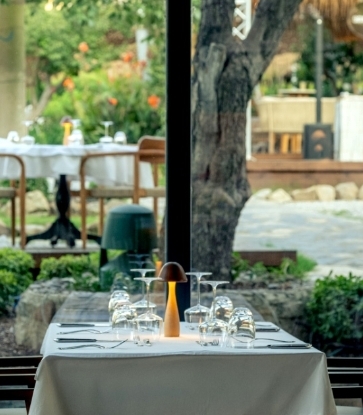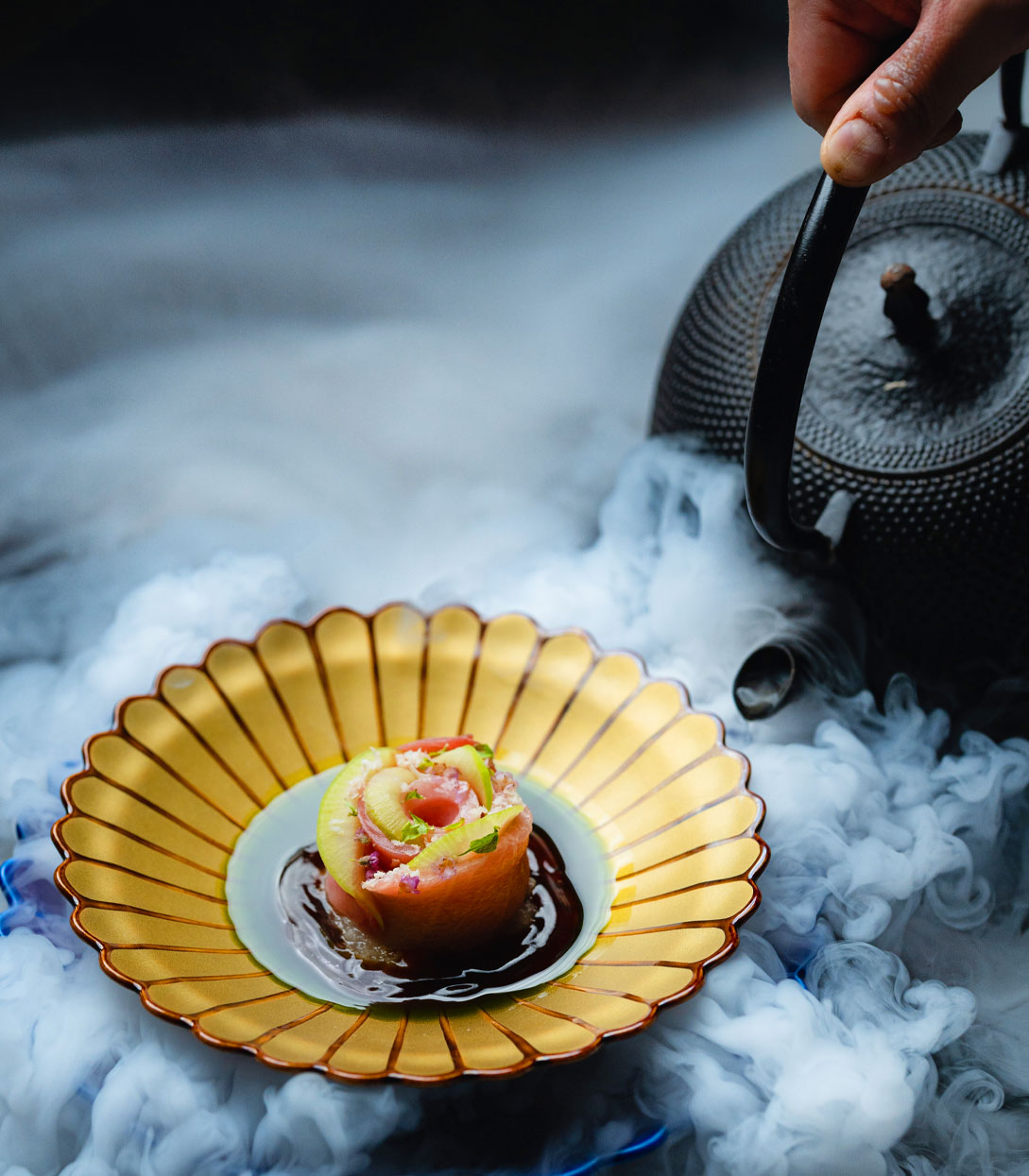There are few restaurants that deliver Peruvian cuisine at such a high level like Causa. There are even fewer when it comes to showcasing it with such depth and dedication. Created to be an ambassador of Peruvian cuisine, this Washington, D.C. hotspot sports a six course tasting menu that’s designed to take diners on a journey through the regions of Peru,
Each course represents a different ingredient or region, chef Carlos Delgado tells me. “We want to educate and spread the love of Peruvian cuisine,” he adds. “To bring attention to Peru and an understanding of Peruvian cuisine as a global influence at the same level as other high end cuisines.”
But the story of Peruvian cuisine is a complex and flavor packed one that can’t simply be told through a simple dinner. So how does chef Delgado manage to do exactly that in just six courses? Through a healthy dose of storytelling, a modern twist on Peruvian food, and even better ingredients.
Below, executive chef Carlos Delgado brings us behind the scenes of this brand new One Star and dish on how they’re bringing the bounty of Peru to guests—minus the plane ticket. And before you dive into the story, make sure to check out our Inspectors' take here.
What was the idea behind Causa?
To be ambassadors of Peruvian cuisine and culture through shared experiences. Causa represents a Peruvian fine dining illustration of Coastal, Andean and Amazonian cuisine. The 6 course tasting menu is designed to take diners on a journey through various regions of Peru, with each course expressing a different ingredient or regional difference.
What is your view on the Peruvian food scene in Washington, D.C?
We have a few great Peruvian restaurants here, but most are traditional. Peru as a destination is slowly becoming more popular, and I think one day we will have tons of Peruvian restaurants around the country. I love the traditional aspect of it, but I felt we needed to do something different in order to showcase the culture beyond the classic dishes. It was both a challenge and a risk to do a concept like Causa.
What is the hardest part in opening a restaurant focused on Peruvian ingredients and flavors?
American guests understand Italian, French, and other more common cuisine. Peruvian food is a complex and less understood cuisine that requires a detailed explanation and backstory to give the full context of flavors. Furthermore, Peruvian cuisine in America is often represented as 'traditional' Peruvian cuisine, we exemplify a more modern presentation.
Storytelling is integral to our service in Causa. Not only do we need to teach and train our staff to impart the stories and passion of Peru, but we need to open the guests' minds and hearts to what Peruvian cuisine can mean in an elevated, fun and finessed style.
Sourcing of ingredients can also be difficult, especially peppers and indigenous herbs—used heavily as ingredients in dishes as well as in garnishes.
Desert island must haves from the restaurant?
I'd definitely say our fish market options where you can choose a whole fish and get half carved in a cold preparation (either cebiche, sashimi or tiradito), while the other half goes into our Josper oven with a choice of a variety of sauces. I think it's incredible to experience one fish in two entirely different culinary styles.
Our chazuta dessert is also truly special. It’s made from an Amazonian ingredient called macambo—it has a silky white chocolate and hazelnut flavor that’s accented by huacatay (Peruvian black mint) and passionfruit with hints of Maldon salt tying it all together.
What was the initial feedback to the menu/concept? How often are you planning on changing the menu?
The response has been overwhelmingly positive! It’s helped us gain confidence to push forward even further in our concept. Although we have had some guests that were hoping for a more Peruvian environment, the community has embraced us wholeheartedly.
Many guests have had their best restaurant experience with us. D.C. is a great city to work with more avant-garde cuisine—there’s an immense amount of diversity here, as well as a thriving Peruvian economy. The embassy of Peru has recognized our input and positive influence to Peruvian culture by awarding us an achievement of recognition.
The menu pays homage to Peru’s gastronomic landscape, what was the inspiration behind that?
Most restaurants in the U.S. tend to serve Criollo or coastal home-style cooking, which is representative of only a portion of what Peruvian cuisine has to offer. After traveling and eating my way through Peru, I wanted to be an ambassador for the entire country's bountiful cuisine. The menus we execute at Causa offer a small taste of Peru.
If you were dishes on the menu, which ones would you be?
The classic Peruvian comfort food: cebiche, but using dry-aged fish. This shows the technique behind my career and how we can interpret and showcase beautiful Japanese fish in a classic way.
What inspired you to become a chef?
Growing up, I helped my grandmother Graciela in all of her kitchen and culinary activities. This planted the seed of a love of cooking that has never left me.
Talk about your journey from growing up in Callao to the fine dining scene in Washington, D.C. How has your relationship with cooking changed as you progressed with your career?
What began as a bonding experience with my grandmother in her kitchen became something much more, very quickly. As it is with all chefs, working in other chefs' kitchens helped me learn not only their ways with their experiences; but also finesse my own and find my own voice. Working under Jose Andres for six years made me appreciate the love of food in D.C., but this time around, I was able to showcase my own culture, country and food. While it has been a lot of hard work and struggle to get to this place, I am eager for the future and incredibly grateful for both my past and my present.
What challenges did it bring?
I think this is a question that has two unique components that need to be answered separately; the personal and the professional.
Growing up in Callao and moving to the United States brought an intense culture shock. Any time one moves from their place of origin to a different area, it brings an adaptation to a new way of life and a completely new mindset. There are factors that change the way you do things and the way you think.
When I came to the US, I was without the grandmother who raised me (though she visited most summers and left in the winter because she hated the cold), and I was a teenager in a society that I wasn't familiar with or quite comfortable in.
Professionally, I was always the youngest, so I had to prove myself daily. Coming up through the ranks of any kitchen is never easy, but it is compounded when you are a young Hispanic immigrant doing so. Looking back, I don't think of any of these things as challenges but rather opportunities for growth. The past shaped my present which in turn will shape my future, and I have been hopeful through all of those stages and I continue to be hopeful now.
How hard is it to balance your culture while living in another country?
I think it is a beautiful thing to adjust to the present yet yearn for the past while giving full attention to the future. That part is easy, actually. I travel back a few times a year, and I am hoping to go back 4-6 times per year to keep eating my way through Peru and keep up with my homeland's culture. The bounty of Peru is unmatchable, and one can miss a lot of ingredients, places, drinks and new trends if you stay away for too long. Owning a Peruvian restaurant makes it all a little easier, as I am constantly telling the stories and teaching those not familiar with the culture. It is the benefit of opening something that so closely aligns with my own personal experiences.
What advice would you give to immigrants/people of color trying to make their mark in the culinary world?
Never take no for an answer, but also work hard and be dedicated to your goals and dreams. Be honorable and trustworthy, and be the hardest working person in the room. Others will realize and be inspired by your work ethic and devotion, and will follow you and help you reach your dream. Never stop until you reach your goal. And when you do, go harder.
What about the restaurant are you most proud of?
I love it all and I am proud of the entire concept. In Causa, it is the dance of the service. While it is not entirely choreographed, most times it feels like it is. The ability to make a guest fall in love with Peruvian food, with only 22 maximum seats twice a night, it feels like we are entertaining a dinner party rather than a dinner service.
Last meal on earth, what are you eating?
Hmmmmmmm. A cheeseburger, strawberry cheesecake, pasta with bolognese, anticuchos in Peru, and cebiche de conchas negras (blood clam ceviche). I have a few last meals!



















